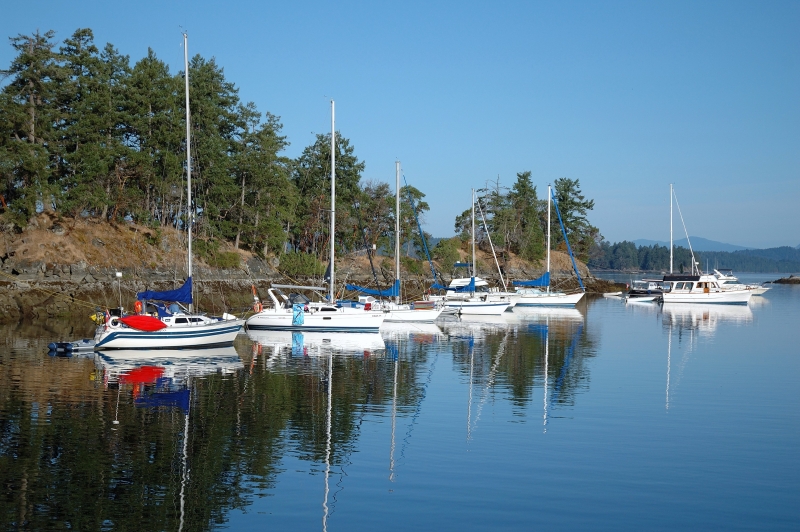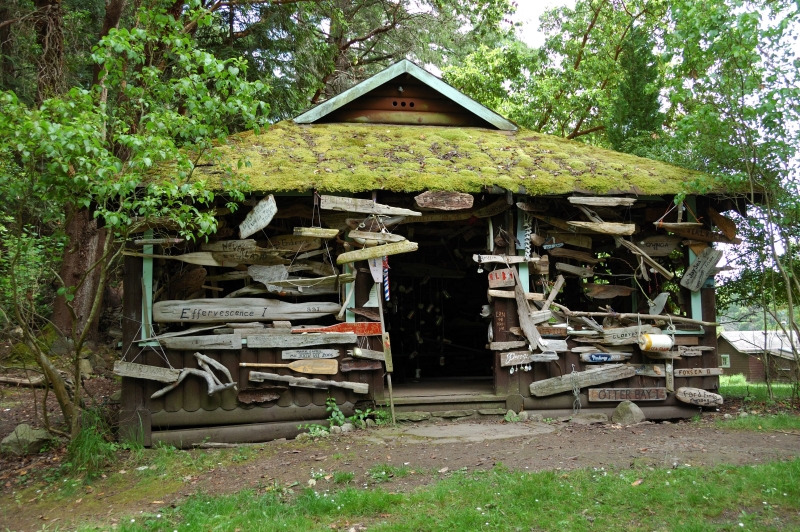Wallace Island Marine Park, B.C.’s Gulf Islands
16th September 2024
Located in Trincomali Channel between Galiano and Saltspring Islands, there’s a little island where you can sense what it was like in the 1940’s and 50’s to live on a remote island. A place where, if you let your imagination go, you can get a feeling of how these adventurous and hardy souls lived.
In the late 1930’s, a young David Conover worked summers as a counselor at a camp for boys on Wallace Island. He became so enamored with the island that he dreamed of living there year-round.
For Conover, the dream of an island existence came true in 1946. Newlywed David and Jeanne were living in Los Angeles when they heard that the camp on Wallace Island had closed, and the island was for sale. The Conovers decided to purchase the island, and they arrived at the abandoned summer camp on what is now known as Conover Cove. The Conovers initially lived in a tent, and later without much money or experience and little water built a small home and resort cabins. The next summer they opened the Royal Cedar Cottages at Conover Cove, which they operated until the mid-1960s.
The Conovers had a son in 1950 and spent his entire youth on Wallace Island. Summers were idyllic for young Davey when families would stay in the resort’s cabins and there were other children to play with. A sense of isolation returned to the island each fall, and the winters for Davey, who commuted by boat to school on Salt Spring Island, were long and lonely.
In 1966 the Conovers began to sell major portions of the island and Jeanne moved to Victoria where Davey attended high school, and David Sr. moved to a new home he build, on an 11-acre parcel overlooking Princess Cove, which remains under private ownership.

Jeanne didn’t move back to Wallace Island, but David Sr. lived there until his death in 1983, at the age of 63.
David Conover’s books Once Upon an Island and One Man’s Island chronicle the family’s struggles and joys after their purchase of the island. Their resort was advertised as having “a modern well stocked store, cabins, recreation hall and boat rentals.” Some of the buildings that formed the Conovers’ resort still stands.
In 1990, the Province of British Columbia obtained most of the island for the purpose of making it a provincial marine park. Wallace Island Marine Park was established in 1990.
There are reefs and shoals to consider when approaching both coves that offer safe moorage, so a properly scaled chart, careful attention to the depth sounder and slowing to an appropriate speed are required for a successful entrance to either cove.
The entrance to Conover Cove is shallow at low tide and care must be exercised to avoid grounding. The cove has a small provincial park float that fills up quickly in the summer. There is anchoring room north of the float for a half dozen boats with a stern tie to the shoreline.
Princess Cove is a long inlet with good holding and very well protected from a southerly. In a blow, you can hear and see the wind howling through the trees on the surrounding hillsides but barely receive a breeze in the anchorage. There are park rings driven into the sheer rock wall on the west side of the cove to secure a stern line.

Launched the dinghy and row over to a small octagon dinghy float, on the western shoreline, to pick-up the trail that leads through the forest to Conover Cove. Follow the well-maintained trail to the head of the Princess Cove and climb a wooded hillside. On top, the path leads across an overgrown meadow with a hand-operated water pump, and a rusting 1950’s Willys Jeep. A reminder of days past when roads were bulldozed, and wells drilled in a failed attempt by Wallace Island Holding Co. to subdivide the island. Today not even bicycles are allowed on the park’s trails – a measure aimed at protecting the sensitive flora and fauna. The trail continues to the resorts’ location on the eastern edge of Conover Cove.
All the abandoned resort buildings are boarded up, except for the camp’s open-sided lodge. There is a paperback book exchange in a corner of the lodge.
Another interesting tradition takes place at the open-air lodge as well. Visiting boaters often scrounge a piece of driftwood, engrave it with the names of the crew, boat’s name, and date of visit and hang it from the rafters in the lodge or attach it to the walls.


